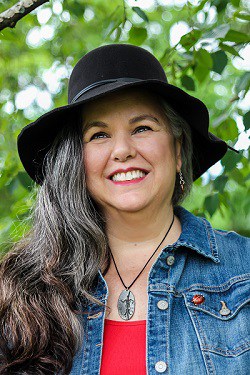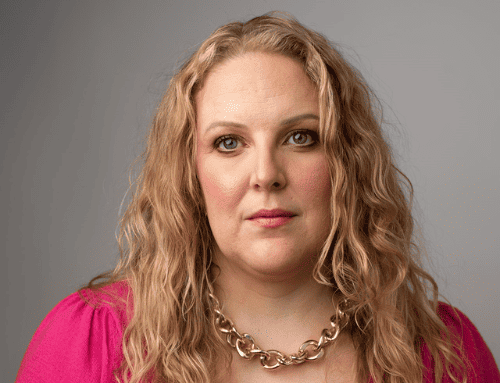INAC’s Unstated Paternity Policy and 6(1)a All the Way
From 1876 through 1985, when a woman registered as a status Indian married a white man, she and their children were denied Indian status registration; at the same time, when a man registered as a status Indian married a white woman, he could pass on status registration to her and their children.
In 1985, the Indian Act was amended to remove this sex discrimination. The argument was that this legislative remedy would bring the Indian Act in line with section 15 of the Canadian Charter of Rights and Freedoms. However, these changes have come under criticism. Indigenous advocates have pointed out that sex discrimination continues through the second-generation cut-off rule and the way it is applied faster to re-instated Indian women and their children born before 1985. Further, a new form of sex discrimination was created known as “unknown and unstated paternity” – when a father did not sign his child’s birth certificate, Indian and Northern Affairs Canada (INAC) assumed he was a non-Indian man.
You can learn more about the barriers the Act perpetuates here.
Lynn Gehl, Ph.D., is an Algonquin Anishinaabe-kwe advocate, artist, and writer. She’s spent more than 30 years working on a Charter challenge regarding sex discrimination in the Indian Act as it relates to INAC’s unstated paternity policy. Lynn was denied status because her paternal grandfather is unknown. In April 2017, Lynn was granted the lesser form of status known as 6(2) registration. We spoke to Lynn about her court challenge.
Q. Tell me about your situation and why were you not granted Indian status at birth?
My great-grandmother who was Algonquin Anishinaabe ‒Annie Jane Mennesse ‒and great-grandfather ‒Joseph Gagnon ‒were no longer considered Indians because Joseph’s Indigenous mother ‒ Angeline Gagnon (nee Jocko) ‒married a French man. This marriage made them all white people in the eyes of the Indian Act law. This applied to my grandmother, father, and me.
My situation was further complicated by a newly created silence regarding situations of unknown and unstated paternity. Prior to 1985 there were provisions that protected situations of unknown and unstated paternity; The child was considered Indian just like their mother. In 1985, Canada took this provision out and the Indian Act deceptively became silent on it.
After I completed oral family and archival research and after I applied for status, but I was denied because I do not know who my father’s father was. Through INAC’s unstated paternity policy it was assumed he was a white man.
While Canada was celebrating the removal of sex discrimination, not only were they perpetuating it on the reinstated women and their descendants with the earlier application of the second-generation cut-off rule, Canada also took the remedial legislative process as an opportunity to create a new form of sex discrimination. What was really wrong is INAC was applying their unstated paternity policy retroactively and worse, in situations where the father was unknown because of sexual violence such as rape.
Policy and law makers must do better than to manipulate legislative change in a way that disguises past sex discrimination and creates new forms of sex discrimination. Is this not what the Charter is about; acting in a good and moral way?
Q. Can you talk about the challenges you faced during this process?
First, due to colonization I didn’t have a relationship with my grandmother, so I had to establish one to gain a critical understanding of my family oral history. She lived in Haileybury, Ontario; I was in Toronto.
Second, I had to go into the archives to find the necessary documents that linked my great-great grandmother ‒Angeline Gagnon ‒to her father, my great-great-great grandfather ‒Mukwa Jocko ‒to prove that she was entitled to status in her own right, and thus her son, my grandmother, my father, and myself. All of this was made more difficult by the fact that I have a vision disability and I am not an archive researcher.
Third, I didn’t apply for status until 1994 when I had the documents needed and despite my preparedness I really wasn’t sure what INAC would do with the unknown paternal grandfather as it was unclear; in the end, it became clear to me and I was denied for that reason. At the time, I was denied through the second-generation cut-off rule meaning my grandmother and father were now entitled, but not me.
I contacted Aboriginal Legal Services of Toronto (ALST) and asked Kimberly Murray, the Director at the time, if ALST would take on my unstated and unknown paternity case on and they accepted. Actually Kimberly welcomed me with open arms and I am so very grateful to her and all the staff at ALST. I was in litigation for 22 years where I encountered many barriers and delays such as funding issues, changes of ALST staff lawyers, not stepping into my responsibility to see the case through to the end, the deep pockets of INAC and the Department of Justice (DOJ), INAC and the DOJ not producing all the evidence for the judges to properly adjudicate the issue, and the runaround by Canada’s laws, practices, and judges. It was an incredibly isolating and miserable process.
Q. You’ve since had success and been granted entitlement to Indian status registration. How did you feel about the verdict?
I lost at the Superior Court level. The judge relied on a very superficial understanding of equality. Then Ontario’s highest court, the Court of Appeal, relying on administrative law, ruled it was unreasonable for INAC to make the assumption that my paternal grandfather was not an Indian. Then the judges ruled that I was only entitled to 6(2) Indian status, a lesser form of status. They’re wrong, and I’m not happy with Canada imposing on me a new form of sex discrimination. This is a similar situation to Sharon McIvor, who launched a Charter challenge in 2009 alongside her son because he could not legally pass on Indian status to his children. In her case, the B.C. Court of Appeal ruled that the issue is matrilineal descent, not sex discrimination. Sharon and I both want a “6(1)a All the Way” legal remedy and we are working hard to ensure this remedy is codified in Bill S-3, a bill meant to fix gender-based inequalities in the Indian Act that is currently before parliament.
What is most disturbing about my court case is that INAC and the DOJ spent one million dollars defending their unstated paternity policy, a policy that harmed Indigenous women, girls, and children. It is important that I re-stress this policy is applied in situations of rape, incest, sexual slavery, and even in situations when girls were not of legal age to consent to sex.
Learn more about section 6(1)(a) Status here and why 6(2) is a lesser form of status
What advice would you have for an Indigenous woman considering taking on a challenge like yours?
It is still very raw for me, and I really don’t have happy thoughts. I would say if they can achieve some happiness and a good life not taking on a challenge like this then go, develop, and manifest it. Indigenous women and girls are deserving of this. But if they are hurt to the point where it is depressing and they lack constructive agency, and the challenge would give their life meaning and direction, then I would say “yes, do it.”
Lynn continues to fight for Indigenous women and girls. She was called in as an expert by both the Senate and the House of Commons to discuss Bill S-3. She also recently published a case study analysis on birth certificate tampering in which she discusses situations where hospital and government administrators in Ontario have tampered and re-tampered with long form birth certificates.
Read more about legislative silence and sex discrimination in the Indian Act








Hi Lynn is 6,1-A alll the way done yet
Hi can you keep me up dated on section 6(1)A Status Discrimination against women
[…] Lynn Gehl on Sex Discrimination in the Indian Act […]
[…] Lynn Gehl on Sex Discrimination in the Indian Act […]